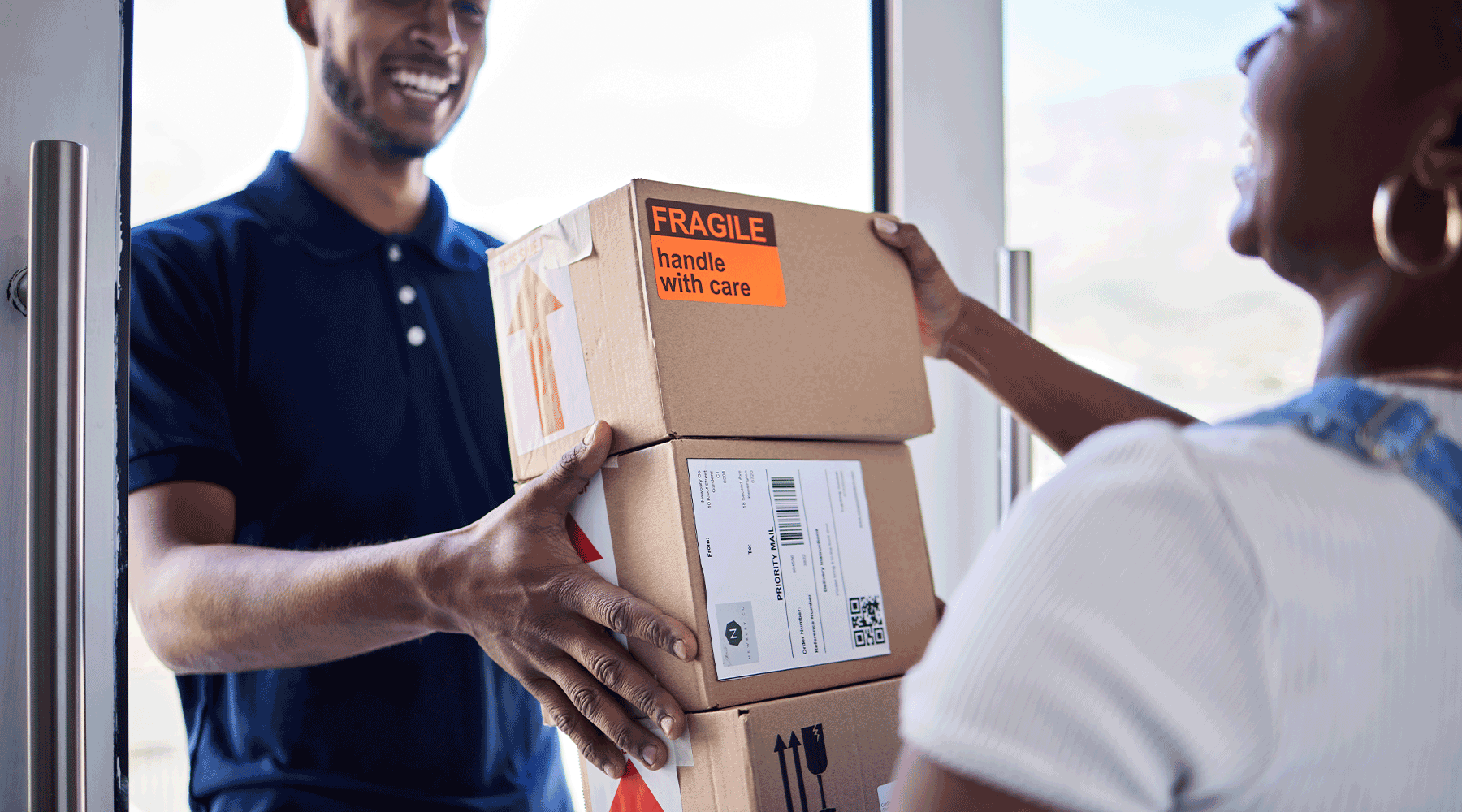What is Expedited Shipping?
Fast shipping isn’t just a perk anymore, it’s a promise. Whether it’s a replenishment order, a product launch, or a last-minute gift, customers expect options that go beyond standard delivery. That’s where expedited shipping comes in. But what is expedited shipping really? And what does it take for businesses to offer it reliably at scale? In this article, we’ll break down the meaning of expedited shipping, how long it typically takes, when it’s worth offering, and what it takes operationally to deliver on those tight deadlines. You’ll also learn how fulfillment technologies like AutoStore help businesses keep up with demand while keeping costs under control.
Key takeaways
- Typically one to three days, it offers prioritized handling over standard shipping to meet rising customer expectations.
- Ideal for high-demand launches, healthcare needs, FMCG restocks, and loyalty-driven DTC brands.
- Premium carrier rates, labor intensity, and inventory pressure make expedited delivery expensive without the right systems.
- AutoStore’s automated storage and retrieval system (AS/RS) reduces handling time, increases accuracy, and integrates seamlessly with warehouse management systems (WMSs) and order management systems (OMSs) to hit tight service level agreements (SLAs).
- Reliable carriers, tech-aligned partners, and automation-first strategies turn expedited shipping from a risk into a competitive edge.
The meaning of expedited shipping
Expedited shipping is a faster delivery option designed to get orders to customers sooner than standard shipping, often within one to three business days.
While standard shipping may take up to a week, expedited shipping prioritizes speed by reducing transit time and moving packages through the carrier network more efficiently. Think FedEx expedited shipping or UPS expedited shipping, these services offer faster routing, earlier pickups, and later delivery cutoffs.
To clarify:
- What does expedited shipping mean?: A premium service for quicker delivery.
- How long is expedited shipping?: Typically one to three days.
- What does expedited shipping mean?: Faster, prioritized handling compared to standard delivery.
For logistics teams and warehouse operators, it’s more than a shipping label, it’s a commitment to speed. Next, let’s compare how expedited shipping stacks up to standard delivery.
Understand the difference between expedited and standard shipping
Standard shipping typically takes five to seven business days. Expedited shipping cuts that down to one to three days, and sometimes even same-day delivery.
Why speed matters
- Expedited shipping time: typically one to three days
- Standard shipping: usually five to seven days
- How fast is expedited shipping? Fast enough to meet Prime-style expectations
When every hour counts, fast shipping creates a competitive advantage, especially in high-volume retail environments that sell fast moving consumer goods (FMCG) or direct-to-consumer (DTC).

When is expedited shipping worth it?
Not every order needs to arrive tomorrow. But when timing matters, expedited shipping delivers more than just speed, it creates trust.
Who benefits most?
- Retail and DTC: Competing with same-day services
- FMCG: Avoiding stockouts and keeping shelves full
- Healthcare: Ensuring delivery of time-critical supplies
- Subscription models: Consistent timing = higher retention
Explore How To Automate Your Healthcare Warehouse!
Best times to offer it
- Product launches with high demand
- Low-inventory, high-margin items
- Loyalty perks or VIP shipping tiers
When used strategically, expedited shipping turns delivery speed into a brand strength.
Next, we’ll explore why and when it makes sense to offer expedited options and how to prepare for it operationally.
The true cost of expedited shipping and what to watch for
Faster delivery isn’t free. If you’re not operationally ready, costs and risks can escalate quickly.
What influences cost?
Carrier pricing: FedEx, UPS, and others charge premiums for expedited tiers.
Labor: Faster pick/pack often requires more labor or longer shifts.
Packaging and handling: More attention to speed can mean more touchpoints.
Inventory strain: If stock isn’t in the right place, you risk delays.
Explore the process and benefits with automated packing solutions!
What are the risks?
- Missed SLAs and customer dissatisfaction
- Errors from rushed processes
- Stockouts due to poor inventory visibility
That’s why success with expedited shipping depends on the speed and accuracy of your fulfillment operation. Find out how automation can help you secure it.

Use automation to deliver fast without sacrificing accuracy
Expedited delivery starts long before the label is printed. The speed must come from within your fulfillment system where automation becomes a game-changer.
AutoStore: Built for fast, precise fulfillment
The high-density AS/RS from AutoStore powers faster shipping through:
- Automated Bin-to-pick stations in seconds
- Real-time inventory syncing so stock is always where it should be
- Integrated workflows with WMS, OMS, and enterprise resource planning (ERP) systems to cut lead times
Hit ambitious targets with confidence
- Process orders within 30 minutes of placement
- Reduce handling time with fewer manual touches
- Lower error rates and protect on-time delivery metrics
With AutoStore, you create the fulfillment backbone needed to meet expedited shipping demands without adding labor or taking up extra space. But speed doesn’t happen in isolation. To fully deliver on the promise, you also need the right partners and infrastructure supporting every leg of the journey. Learn more about it in the upcoming section.
Build the right network to support expedited delivery
Your shipping speed is only as strong as your partners and infrastructure.
What to look for in a shipping partner
- Reliable SLAs for domestic and international delivery
- Capacity for high-volume, time-sensitive orders
- Specialized offerings like expedited freight or secure card shipments
Why fulfillment-first strategy wins
Before a package reaches FedEx or UPS, your warehouse must be ready to process and route it fast.
Choose fulfillment partners and system integrators who:
- Support warehouse automation
- Integrate seamlessly with your WMS or OMS
- Offer real-time order visibility for smarter routing
With the right fulfillment ecosystem, expedited shipping becomes an operational strength and not a bottleneck.
Conclusion
Expedited shipping gives customers what they want, faster delivery with fewer surprises. But to deliver on that promise, your operations need to move just as fast.
With AutoStore, you’re not just speeding up shipping, you’re building a fulfillment engine that scales with demand. From Bin to pack to dispatch, every step is automated, accurate, and built for speed.
Want to unlock fast, profitable fulfillment? Talk to an AutoStore expert today.
{{cta1}}
FAQ
What is expedited shipping?
Expedited shipping is a premium delivery service that speeds up the transit of packages compared to standard shipping. It prioritizes faster handling, earlier pickups, and reduced delivery times across the supply chain.
How long do expedited orders take?
Expedited orders are usually delivered within one to three business days, though some may arrive sooner if using same-day or overnight services like FedEx Express or USPS Priority Mail Express.
What is the 30-minute rule for expedited delivery?
The 30-minute rule refers to a fulfillment benchmark where an expedited order is picked, packed, and ready to ship within 30 minutes of order placement. With automation systems like AutoStore, this becomes a realistic and scalable goal.






